|
|||||||||||||
|
|
|||||||||||||
|
|
|||||||||||||
Will it cost a lot?Costs can range from very low - affordable by all families - to very high requiring outside financing. In some areas the community took the initiative and provided free labor, which lowered the costs appreciably for both community and the city. (But be careful - the administration is often more complex!) In other cases whole infrastructure systems need to be upgraded on a city-wide basis, clearly requiring large financial inputs. In such cases, upgrading can be staged which spread the costs over a longer period. |
|||||||||||||
|
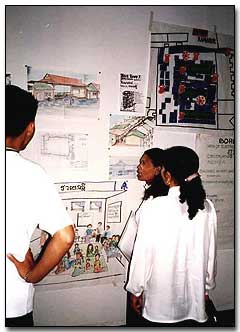
Phnom Penh, Cambodia. Community workshop. |
||||||||||||
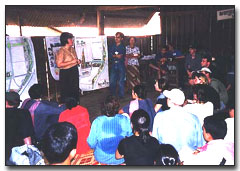
Phnom Penh, Cambodia. Community meeting. |
Why is community involvement important?Some believe that it is quicker and less troublesome if we just go ahead and contract the work out thus avoiding such problems as a potential loss of control or inefficient disbursement. It may be quicker, but experience from projects all over the world points to one fact: community participation is vital for a success. Why is this? The community knows the area and their problems better than practitioners as outsiders will ever know. Getting their input and having them help decide the nature of a project will develop a sense of 'ownership' and increase the project's chances for success. Sustainability is another factor - without the backing of the community, the project will have difficulty in continuing. (See: Interactive Community Planning) |
||||||||||||
Are 'squatter slums' different from 'city-center' slums?Both need support and improvement to allow them to join the city community, but in different ways. Squatter slums tend to be on the outskirts and often illegally occupy land. Families incrementally build their own houses, but have great difficulty in getting clean water, disposing sewage in a sanitary way, and accessing other customary community services. In addition, legalization and regularization are big issues. (See: Land readjustment) City center slums are found in older city sections, with families and young migrants crowded into run-down buildings with very poor or no services. They generally rent rooms or share small apartments in converted houses or apartment buildings. Services are deteriorated and other public services are poorly provided or non-existent. Historical districts often suffer from deterioration and decline and they require sensitive approaches to improvement. On the other hand there are many casual employment opportunities, and housing is very inexpensive although rundown. In these areas bringing the infrastructure up to standard, and providing basic services is important. (See: Housing Priorities) |
|||||||||||||
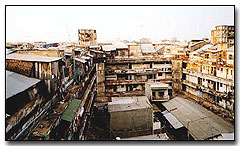
Phnom Penh, Cambodia. Rooftop |

ChiangMai, Thailand. |
||||||||||||
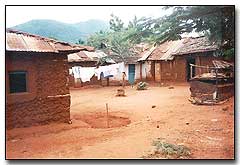
Voi, Kenya. Peripheral village. |
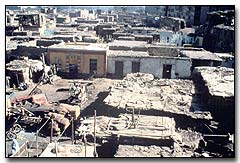
Cairo, Egypt. Squatters in the |
||||||||||||
|
|||||||||||||
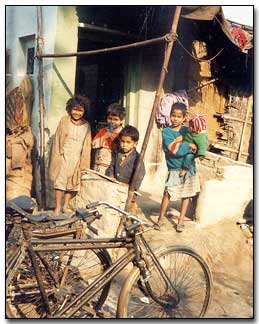
New Delhi, India. Child care can be an |
|||||||||||||
|
|||||||||||||
